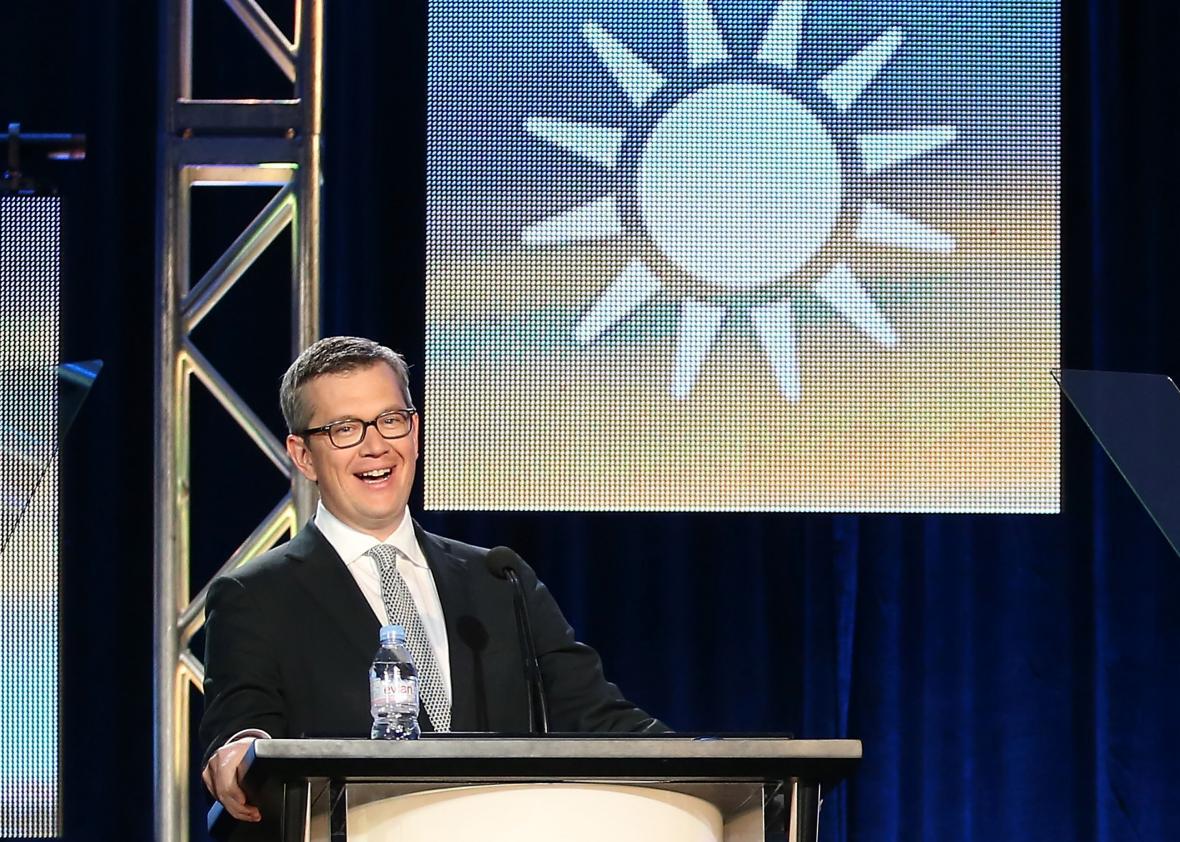For years now, there’s been a storm brewing at the Weather Channel.
Its viewers, a fair percentage of whom we can safely stereotype as bored Baby Boomers on vacation in Branson, Missouri, now greatly skew away from the key 18–49 demographic. In recent years, the network has tried to stanch the bleeding by launching a series of “weather-adjacent” reality shows. Die-hard viewers revolted, and so did television providers. Since last year, the Weather Channel has been dropped by both DirecTV and Verizon FiOS—both citing the decline of live weather programming in their decisions—and Dish Network may be next. The Weather Channel responded with a harsh war of words, yet continued to air footage of hippos swimming.
More than a year ago, in my very first article for Slate, I spoke with the Weather Company’s CEO, David Kenny, about this troubling trend. At the time, he told me he thought people reacted so strongly to the network’s experiment with reality programming because they “feel like they have part ownership of the Weather Channel. They grew up with it.” Now, Weather Channel executives seem to have finally given in: The weather nerds have emerged victorious.
In a series of sweeping changes on Wednesday, the network has decided to phase out “original nonweather entertainment programming,” commit to changing roles for high-profile weather anchors Sam Champion and Al Roker, and feature more frequent on-air deep dives into the science behind the weather.
This week’s announcement means that, with surprising rapidity, the Weather Channel has morphed from aspiring reality-show juggernaut back to its scientific roots: all weather, all the time. On a day-to-day basis, the restructuring means shows like Fat Guys in the Woods are getting the ax, and the just-launched, science-heavy new prime-time show Weather Underground will become a model for future programming.
As more and more millennials cut the cord and opt out of cable service, the landscape of television is quickly changing. The days of 600-plus channel bundles appear to be numbered, and the economics of the enterprise are fundamentally changing. With this week’s news that Apple has finally created an Internet-native, on-demand TV box it’s not ashamed of, it’s an open question as to how long legacy cable networks can thrive.
At the top of that heap is the Weather Channel. The network and its holding company are for sale, with industry analysts saying its owners may be forced to split the TV channel from the rest of the business—mostly because no one seems to want it. Weather.com—that bastion of clickbait—seems to be the crown jewel, as well as smaller divisions of the company that specialize in, among other things, mining huge amounts of weather data for trends in retail consumer behavior. Kenny admitted as much in an interview with CNN this week: “We’re now a technology company that owns a TV channel, not a TV company.”
With billions of dollars of economic activity hinging on small-scale weather fluctuations every day, and with climate change throwing an extra wrench into the system, analytics and general meteorological nerdery appears to be the 21st-century profit center the Weather Company has its sights set on. If a newly geeky Weather Channel can help inspire a new generation of scientists, all the better.
